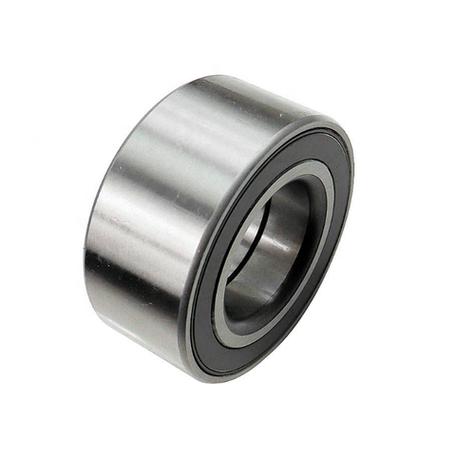Industrial Bearings: Types, Maintenance, Selection, Applications, and Failure Analysis
Industrial bearings are precision components designed to reduce friction between moving parts in machinery. They play a critical role in automotive, aerospace, manufacturing, and energy sectors by enabling smooth rotational motion while supporting axial/radial loads. Modern bearings utilize advanced materials like ceramic hybrids and specialized lubrication systems to enhance durability under extreme conditions.
Table of Contents
1. types of industrial bearings2. industrial bearing maintenance
3. how to choose industrial bearings
4. industrial bearing applications
5. industrial bearing failure analysis
1. Types of Industrial Bearings

Ball bearings utilize spherical rolling elements to handle moderate radial/thrust loads in applications like electric motors. Roller bearings employ cylindrical/tapered rollers for heavy-load scenarios such as conveyor systems. Needle bearings feature slim profiles for space-constrained assemblies in automotive transmissions. Thrust bearings specifically manage axial loads in gearboxes. Specialty variants include magnetic bearings for frictionless operation and mounted bearings with integrated housings. Material selection ranges from chrome steel to polymer composites based on thermal/chemical resistance requirements.
2. Industrial Bearing Maintenance
Proper lubrication interval planning prevents premature wear - grease replenishment cycles should align with OEM specifications. Vibration analysis tools detect early-stage misalignment or brinelling. Contamination control through sealed designs extends service life in dusty environments. Storage protocols mandate climate-controlled conditions to prevent corrosion. Relubrication procedures require thorough cleaning of old grease residues. Alignment checks using laser tools ensure shaft perpendicularity within 0.002" tolerance. Thermal monitoring identifies overlubrication issues before catastrophic failure.
3. How to Choose Industrial Bearings
Load capacity calculations must account for dynamic/static forces using ISO 281 standards. Speed ratings should exceed operational RPM by 15% safety margin. Environmental factors dictate seal types - triple-lip seals for wet conditions versus non-contact labyrinth seals in high-temperature settings. Precision classes range from ABEC-1 (general purpose) to ABEC-9 (aerospace-grade). Lubricant compatibility checks prevent chemical degradation - synthetic oils for extreme temperatures versus food-grade greases in processing equipment. Cost-benefit analysis compares initial price vs LCC (Life Cycle Cost) including energy efficiency metrics.
4. Industrial Bearing Applications
Wind turbines employ oversized spherical roller bearings in pitch/yaw systems. Food processing machinery uses stainless steel bearings with FDA-compliant lubricants. Mining equipment relies on sealed spherical roller bearings for shock load resistance. Robotics implement ultra-precision angular contact bearings for repeatable motion control. High-speed spindles in CNC machines require hybrid ceramic bearings with oil-air lubrication. Magnetic bearing systems enable contactless rotation in turbomachinery achieving 500,000 RPM. Railway axle boxes combine tapered roller bearings with advanced condition monitoring sensors.
5. Industrial Bearing Failure Analysis
Flaking surfaces indicate fatigue failure from overload conditions. Brown discoloration signals thermal degradation due to inadequate lubrication. Brinell marks result from shock loads during improper installation. False brinelling occurs through vibration-induced wear in stationary equipment. Corrosion pitting stems from moisture ingress through damaged seals. Electrical arcing damage appears as washboard patterns in electrified environments. Contamination wear shows as irregular scratching from particulate ingress. Root cause analysis combines microscopic examination with operational data logging for accurate diagnosis.
Understanding industrial bearing fundamentals empowers engineers to optimize machinery performance. This guide covered critical aspects from selection criteria to failure prevention strategies. Whether you're specifying bearings for heavy machinery or troubleshooting premature failures, these insights help reduce downtime and operational costs. Continue reading for detailed implementation techniques across various industrial scenarios.
Conclusion
Industrial bearings remain indispensable components in modern mechanical systems. Proper selection, installation, and maintenance practices significantly extend equipment lifespan while improving energy efficiency. By implementing the strategies outlined - from precision alignment to condition monitoring - operations managers can achieve measurable improvements in productivity and cost control across industrial applications.




 13869596835
13869596835